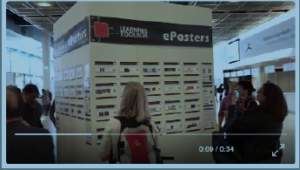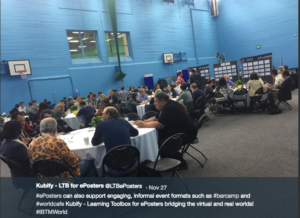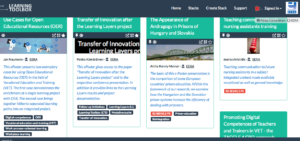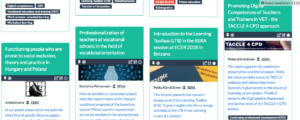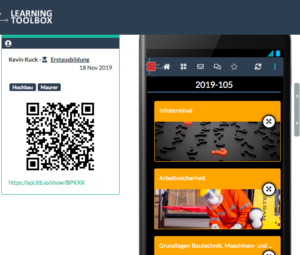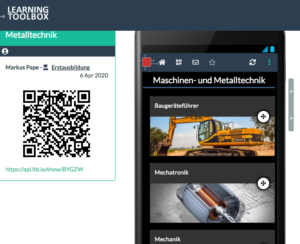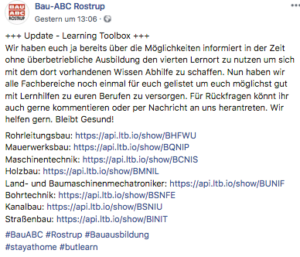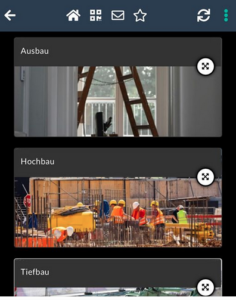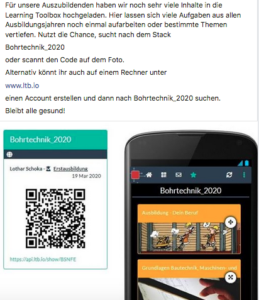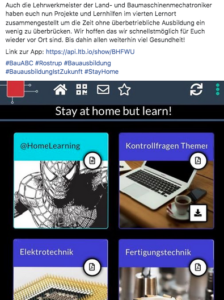Updates on the corona crisis – What news from field activities with the Learning Toolbox?
In some of my recent posts I have discussed the impact of the corona crisis on education, training and learning as well as on conferences that are of interest to us. In my latest blogchat session with developers and promoters of the Learning Toolbox – Gilbert Peffer and Werner Müller – I was able to get more insights into the current activities in the field: What is happening currently with the use of LTB to support education, training and learning during and after the lockdown period? What is happening with the use of LTB as support for conferences that are being organised as online events? I will start with the conferences and then proceed to the field activities in education and training.
What news on the use of Learning Toolbox (LTB) in conferences
As I have told in my recent posts (on the impact of the Learning Layers project), the Learning Toolbox (LTB) was developed primarily to support vocational and workplace learning. However, a very successful spin-off prospect emerged when LTB was used to prepare ePosters (supported with mini-posters on poster walls or cubicles). This kind of complementary use of ePosters alongside other modes of presentation started to spread already before the corona crisis.
Now that many conferences have sought ways to convert face-to-face events into online events, the prospect of using ePosters as a major solution has been taken up by several conference organisers. Here, new arrangements have been made to keep the ePosters visible online already during a pre-conference period. Then, during the actual conference period, particular sets of ePosters have been discussed in batches in online sessions. Now this mode of work is taking up and will probably sustain even after the exceptional period. For the developers and key promoters of LTB this has reduced travelling to conference venues and participation in face-to-face events. Instead, they have done more online tutoring and customisation of the use of LTB with supporting online communication services.
What news on the use of Learning Toolbox as support for vocational and workplace learning
Whilst the lockdown has given a push to conference organisers in finding new solutions to prepare online events with larger scale, the picture in the field of vocational education and training (VET) varies. As we have seen it, the transition from classroom teaching into online learning has been implemented rapidly in general education and higher education. For vocational and workplace learning such a transition has not been an easy exercise. In particular the intermediate training centres (that support work process oriented learning in simulated learning spaces) have gone through hard times. In Germany these organisers have been interested in promoting the use of LTB in education and training. Now, due to the lockdown, some advanced training centres – in particular the training centre Bau-ABC Rostrup – have managed to provide LTB stacks to support independent learning of apprentices during the closure period. However, in other training centres the lockdown has interrupted the process of getting a core group of trainers to promote the use of LTB in several trades. Moreover, the reopening of the centres just before the examination period has provided additional challenges.
—
I think these were the most important messages that I need to share in my blog. In addition to these general impressions I had some further thoughts concerning the designed Multiplier Event of the ongoing TACCLE4 CPD project that we want to organise by the end of the project. As I see it know, it is not likely that we can organise it as a face-to-face event – whether before the summer holiday period or shortly after it. And since we need to organise an online event, we still have to think about the arrangements and the timing.
As we have a short time to complete the tasks for the project, we need to opt for a prerecorded webinar or a series of short webinars. And with this arrangement we need to think of a flexible mode of participation within a flexible time frame. In this way we can probably adjust this event to the time constraints of the designed participants – teachers and trainers in the field of VET. As we have seen it, it is essential to provide new impulses at a time when the potential participants have time and energy to work with the content we provide for discussion.
These were my preliminary thoughts. I need to have further discussions with my colleagues who are supporting me in the TACCLE4 CPD project. Let us see where we can get in the coming times.
More blogs to come …
